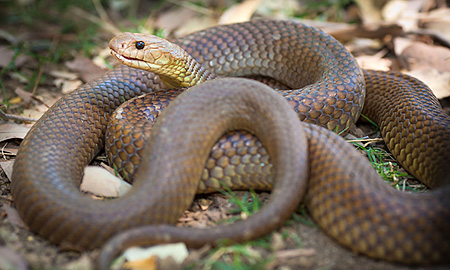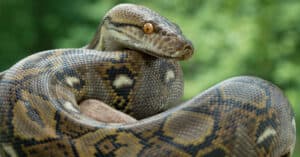Introduction
When it concerns poisonous serpents, Australia is home to a few of one of the most remarkable and harmful species on the planet. Among these, the Tiger Snake stands out not just for its potent venom but also for its fascinating actions. Comprehending the actions of poisonous serpents like the Tiger Snake is crucial for both wildlife fanatics and those living in areas where these snakes are present. This article explores various aspects of Tiger Snake habits, habitat, identification, precaution, and first aid techniques in case of a serpent bite.
Understanding the Habits of Venomous Snakes Like the Tiger Snake
The Tiger Snake, clinically known as Notechis scutatus, is notorious for its aggressive nature when threatened. These snakes exhibit a series of habits that can be fairly various from their non-venomous equivalents.
Characteristics of Tiger Snakes
The Tiger Snake is conveniently identifiable due to its distinctive bands or red stripes that appear like a tiger's markings. They can differ in shade from yellowish-brown to dark olive or black. This pigmentation offers not just as camouflage however also as a warning signal to prospective predators.


Adaptability to Environment
One remarkable aspect of their behavior is their adaptability to numerous atmospheres. Discovered mostly in seaside regions, marshes, and wetlands throughout Australia and Tasmania, they can grow in diverse environments consisting of urban locations.
Hunting Techniques
Tiger Serpents are ambush predators mostly preying on fish, frogs, and small animals. They have eager sight and a severe sense of odor which aids them in situating victim effectively.

Venom Composition
Their venom consists of neurotoxins that impact the nerves, bring about paralysis or death in smaller sized pets. For people, immediate medical attention is critical after a tiger snake bite due to its potentially lethal effects.
Natural Habitat of Tiger Snakes
Preferred Locations
Understanding where these serpents reside sheds light on their behavioral patterns. The tiger serpent habitat consists of:
- Coastal regions Swamps Grasslands Urban areas with abundant water sources
Seasonal Movements
During warmer months, Tiger Snakes are extra energetic as they indulge in what does a snake bite look like sunshine or hunt for food. On the other hand, colder months see them pulling away right into hibernation sites.
Are Tiger Snakes Venomous?
Yes! The question "are tiger serpents venomous?" often emerges among those not familiar with this varieties. Their poison is taken into consideration one of the most dangerous amongst all serpent species worldwide.
Symptoms of a Tiger Snake Bite
If bitten by a tiger snake, symptoms may include:
- Localized pain Swelling at the bite site Nausea and vomiting Sweating and confusion
Immediate clinical assistance is vital as neglected bites can lead to extreme wellness difficulties or perhaps death.
First Help for Snake Bites: Quick Action Guide
Knowing exactly how to provide emergency treatment for a serpent bite might conserve somebody's life. Here's what you need to do:
Step 1: Remain Calm
Keeping tranquility assists reduce heart price which lowers poison spread.
Step 2: Incapacitate the Impacted Area
Keep the affected limb still and below heart degree if possible.
Step 3: Call Emergency Situation Services
Always seek specialist clinical assistance quickly after a snake bite.
First Aid for Snake Bite Set Essentials
A well-equipped snake bite first aid kit need to consist of:
- A compression bandage Antiseptic wipes A pair of scissors A cold pack
Safety Safety measures: Avoiding Serpent Bites in Australia
Awareness Programs
Educating areas about neighborhood serpent species and their actions can significantly reduce experiences leading to Dugite Snake bites.
Avoiding Unsafe Areas
Staying away from lengthy grass throughout warmer months reduces contact with serpents that might be relaxing or hunting.
Common Mistaken beliefs Regarding Tiger Snakes
Many people think misconceptions concerning the habits of tiger serpents cause unnecessary concern. Right here are some explanations:
Myth 1: All Tigers Are Aggressive
Not all tiger serpents will display hostility if left undisturbed; numerous prefer leaving rather than confrontation.
Myth 2: They Chase Humans
Tiger snakes do not actively chase after human beings; they may strike when they really feel endangered but will generally pull back if provided space.
Conservation Efforts Related to Poisonous Snakes
Conservation efforts concentrate on informing communities regarding securing neighborhood wild animals while reducing human-snake interactions.
Importance of Ecosystems
Understanding that venomous snakes play an important function in preserving environmental equilibrium helps foster admiration rather than worry in the direction of them.
FAQs Regarding Tiger Snakes
What must I do if I encounter a tiger snake?- Maintain range and gradually back away without sudden movements.
- While bites aren't incredibly typical as a result of awareness efforts, they still occur annually within Australia.
- Baby tiger serpents can deliver complete dosages of poison despite being smaller sized; therefore care is encouraged around them.
- They largely take in frogs, fish, small creatures like rats, and other reptiles.
- It's prohibited in many territories without correct licensing because of safety and security concerns regarding their venom.
- Wear durable boots and remain on marked routes; appearance before positioning hands or feet right into hidden rooms like rocks or logs.
Conclusion
Understanding the behavior of venomous serpents like the Tiger Snake not just enhances our understanding however also promotes safety recognition among those living near their environments. From identifying their attributes, recognizing emergency treatment protocols complying with a bite, via involving preservation efforts-- every element plays an essential role in promoting conjunction with these interesting reptiles https://canvas.instructure.com/eportfolios/3217972/marcopsno053/The_Significance_of_Antivenom_Manufacturing_in_Caring_For_Snake_Bites_in_Australia while appreciating their location within our ecosystem.
As we grow our understanding through education and experience, we contribute positively towards guaranteeing both human safety and security and wild animals conservation-- benefitting all events involved!